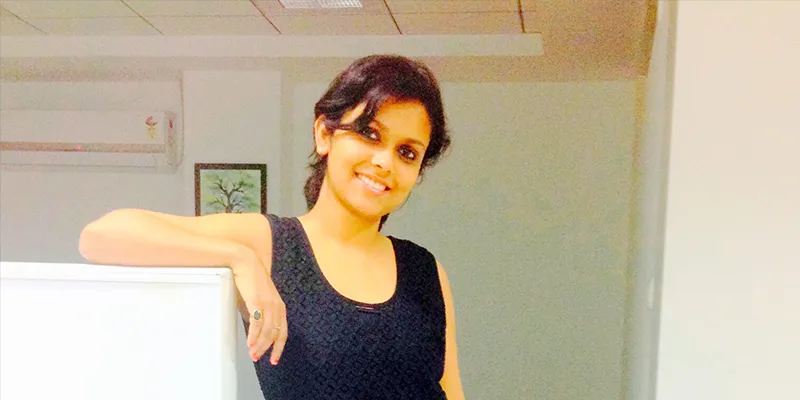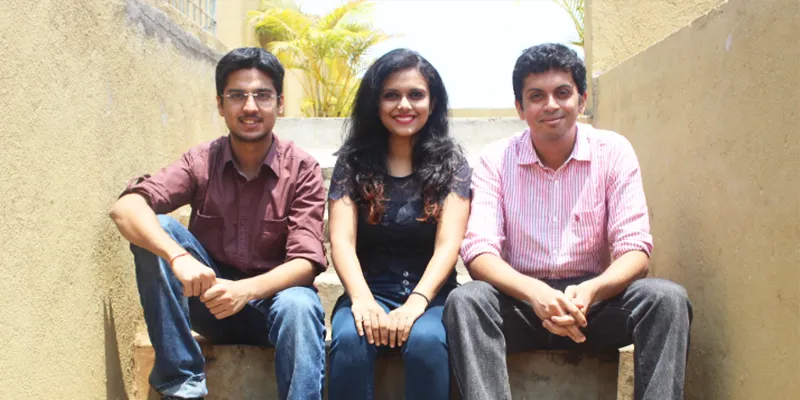Why would you not buy a pre-owned luxury brand for peanuts? asks Elanic’s Aditi Rohan
Anamika Singh loves the Van Heusen clutch she bought, Somya Nigam adores her white Zara dress, and Shalini Priya can’t stop admiring her first Mango dress. All pre-owned items of fashion, purchased at great prices from Elanic, a fashion-centric peer-to-peer platform.
Started with a seed round of funding from Singapore-based Japanese venture capital firm Rebright Partners, Tracxn Labs, and angel investor Aneesh Reddy, this Bengaluru-based platform simplifies buying and selling of pre-owned fashion for women in India, and features brands from well-known global and Indian labels like Ritu Kumar and Anamika Khanna.

The venture was started in 2015 by Aditi Rohan (26), along with co-founders Abhilash Narhari (27) and Palkush Rai Chawla (26), whom she met through common friends. Abhilash and Palkush were batch mates in IIT Kharagpur.
Aditi says, “Pre-owned fashion is an untapped market; we have seen that people try to sell through various channels like Instagram, Facebook groups, offline events, bazaars and Olx/Quikr. The traditional solutions were either too time-consuming or intrusive. Selling on a platform like Facebook had its own hassle - from payments to delivery, you had no option but to trust that the other person would do what they promised; dispute resolution was another issue entirely. With Elanic, we have tried to solve each of these problems.”
Changing the mindset
A decade ago, Daryanganj in Delhi and Chor Bazaar in Mumbai drove the second hand market. While these highly fragmented zones have still not lost all their charm, the organised and ‘legal’ online avatars of these second hand markets have gained popularity in recent years.
An ASSOCHAM paper from January 2014 had estimated that the volume of India’s second hand and recycled market, including consumer products, automobile and industrial raw material and machinery, would likely grow from an estimated Rs 80,000 crore at the time to Rs 1,15,000 crore by 2015.
In the last year and a half, the second hand industry has also witnessed pre-owned fashion vie for space in the market. However, the biggest challenge they face is creating awareness.
“Most people still don’t understand that there exists an active market for pre-owned goods in categories such as fashion and lifestyle. In fact, even now, many of our sellers are surprised when their items sell out,” shares Aditi.
Customer behaviour
According to Aditi, sarees are the most searched for items in their ethnic wear segment. Other than that, some brands that sell like hot cakes are Zara, Mango, H &M and Vero Moda.

In their experience, girls and women in the age group of 18-24 are the most open to second hand clothes and accessories. But as far as luxury pre-owned fashion is concerned, the customer base comprises mostly women in the age group of 30-35.
A poll that YourStory ran on social media shows that a majority of people do not buy the concept of pre-owned fashion. Others are okay with pre-owned accessories and luxury, and a very small percentage goes all out to buy everything pre-owned.
Aditi says, “A taboo does exist, but it is not a strong one. People from tier II and III cities too are investing in pre-owned fashion. Most first-time users start with buying an accessory. Once they are fine with that, they take the next step and turn to clothes and luxury items.”
With regard to the supply side, Elanic is trying to educate people about de-cluttering through videos, encouraging them to clear their wardrobe of everything that has not been used in the last six months.
Value proposition
There are close to 1lakh listings on Elanic, with 250,000 downloads of their Android app.
“I believe that offering a clear differentiator is very important. The value propositions for both the buyer and the seller at Elanic are very clear. Sellers have a platform to sell their pre-owned goods that would have otherwise remained hoarded in their homes, and buyers get absolutely incredible markdowns on products (more than 90 percent in some cases). The response of the crowd towards buying/ selling of pre-loved items has been phenomenal, and we are thrilled with how the Elanic community is growing. We got really excited when VJ Anusha’s PR team got in touch with us, telling us that she absolutely loved the concept and wants to start selling her pre-loved items on Elanic,” she says.
Elanic manages the entire transaction, to ensure that the buyer’s money is protected. They make a commission on every transaction on the platform. The buyer can even return an item if they don’t like it.

Adoption of peer-to-peer marketplace
The company sees a significant overlap between buyers and sellers.
The concept of peer-to-peer marketplaces is still very new in India, and if you look at where we are vis-a-vis the developed markets, we still have a long way to go. Aditi echoes this thought as well. However, she says, “A lot of the infrastructure for this is falling into place. With the spread of mobile wallets, P2P payments have been extremely well adopted.”
Significant improvements in logistics in the last few years have made tracking items, among other things, simple, easing the process further.
Other than fashion, Elanic also caters to pre-owned lifestyle goods.
According to Aditi, this segment is almost non-existent in India, and she says, “We are creating this market, and this is in fact one of the biggest personal motivators. The items sold on Elanic are currently not being sold on the classifieds, such as OLX and Quikr. However, I feel that there is a big gap, since neither of the platforms is designed for lifestyle goods, where discovery and buying behaviour is very different from other categories.”
From design to numbers
A graduate from NIFT, Delhi, Aditi’s designs were shortlisted for WOW (World of Wearable Art) and were showcased in Australia. After she passed out in 2011, she got the opportunity to utilise her talent at Mothercare, where she worked as a designer for their baby girl's clothing line.
At Elanic, she curates everything that the customer sees on the app. In the course of Elanic’s journey, she has let the numbers and data, rather than just her instinct for fashion, drive her.
“We have a strong team of 25 people, and they have pulled me through this last year and a half as I have used numbers, data and consumer behaviour to understand fashion and use it to curate our line and work towards growth,” she says.
The pre-owned fashion sector does not have a single strong player with a majority of the market in its kitty. As of now, there are multiple players like Revamp My Closet, Once Again, Zapyle and Etashee trying to increase awareness and create a market.
Heavy discounts by e-commerce companies during festivals also dilute their sales, as people prefer to buy new fashion and lifestyle products for festivals.
However, for college students and young professionals, who have limited salaries but high aspirations and needs, the peer-to-peer marketplaces like Elanic provide a great way to recycle their wardrobe as both buyer and seller.







